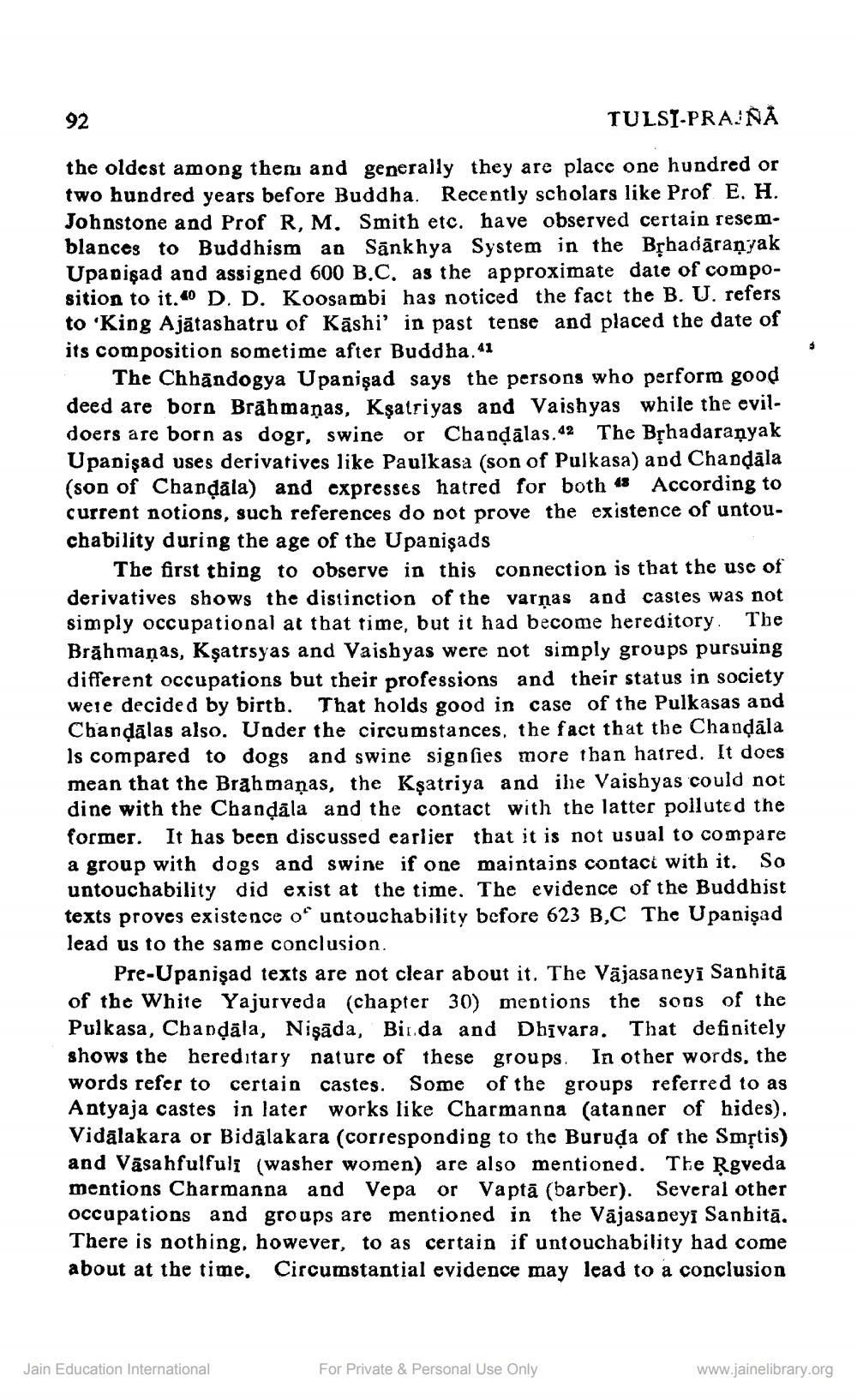________________
92
TULSI-PRA. NA
the oldest among them and generally they are place one hundred or two hundred years before Buddha. Recently scholars like Prof. E. H. Johnstone and Prof R, M. Smith etc. have observed certain resemblances to Buddhism an Sankhya System in the Bșhadāraṇyak Upapisad and assigned 600 B.C. as the approximate date of composition to it.40 D. D. Koosa mbi has noticed the fact the B. U. refers to 'King Ajātashatru of Kāshi' in past tense and placed the date of its composition sometime after Buddha.41
The Chhāndogya Upanişad says the persons who perform good deed are born Brāhmanas. Ksatriyas and Vaishyas while the evildoers are born as dogr, swine or Chandālas.42 The Bșhadaranyak Upanisad uses derivatives like Paulkasa (son of Pulkasa) and Chandāla (son of Chandala) and expresses hatred for both 48 According to current notions, such references do not prove the existence of untouchability during the age of the Upanişads
The first thing to observe in this connection is that the use of derivatives shows the distinction of the varnas and castes was not simply occupational at that time, but it had become hereditory The Brāhmaṇas, Kşatrsyas and Vaishyas were not simply groups pursuing different occupations but their professions and their status in society were decided by birth. That holds good in case of the Pulkasas and Chandālas also. Under the circumstances, the fact that the Chandāla Is compared to dogs and swine signfies more than hatred. It does mean that the Brahmanas, the Ksatriya and ihe Vaishyas could not dine with the Chandala and the contact with the latter polluted the former. It has been discussed earlier that it is not usual to compare a group with dogs and swine if one maintains contact with it. So untouchability did exist at the time. The evidence of the Buddhist texts proves existence of untouchability before 623 B,C The Upanisad lead us to the same conclusion.
Pre-Upanişad texts are not clear about it. The Vājasaneyi Sanhitā of the White Yajurveda (chapter 30) meptions the sons of the Pulkasa, Chapdāla, Nisāda, Binda and Dhīvara. That definitely shows the hereditary nature of these groups. In other words, the words refer to certain castes. Some of the groups referred to as Antyaja castes in later works like Charmanna (atanner of hides). Vidālakara or Bidālakara (corresponding to the Buruļa of the Smstis) and Vāsahfulfuli (washer women) are also mentioned. The Rgveda mentions Charmanna and Vepa or Vaptā (barber). Several other occupations and groups are mentioned in the Vājasaneyi Sanbitā. There is nothing, however, to as certain if untouchability had come about at the time. Circumstantial evidence may lead to a conclusion
Jain Education International
For Private & Personal Use Only
www.jainelibrary.org




